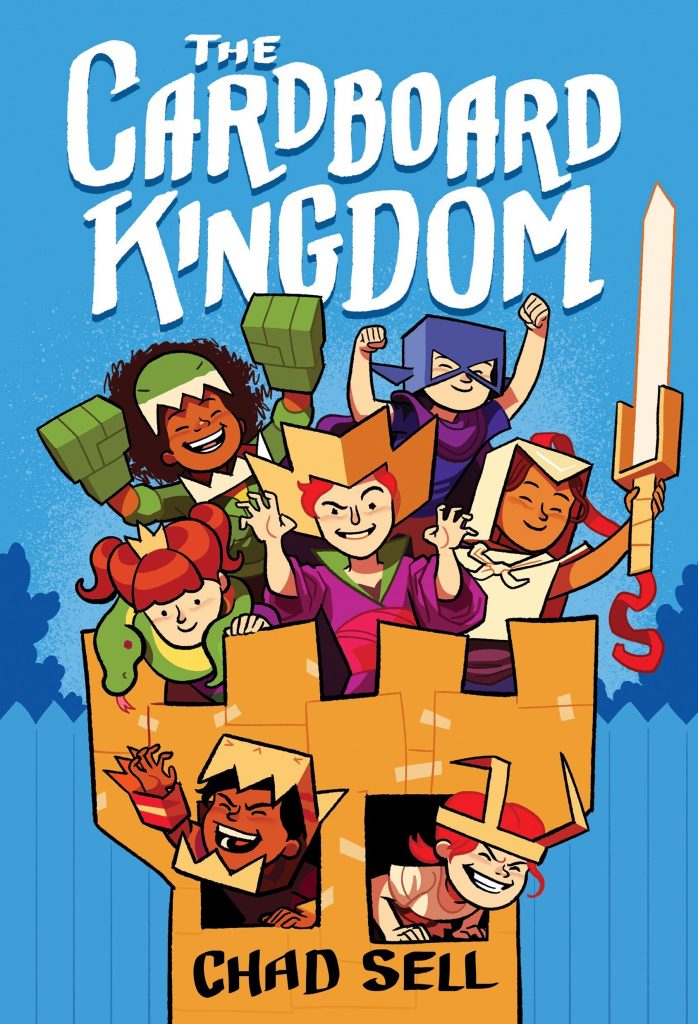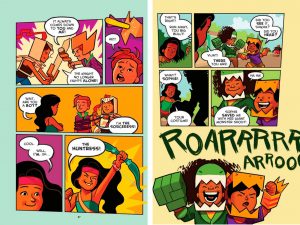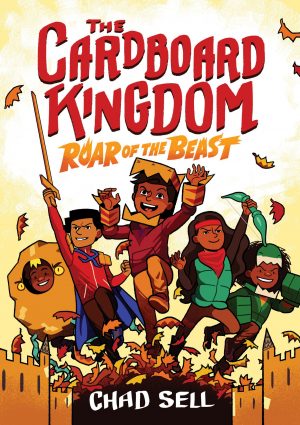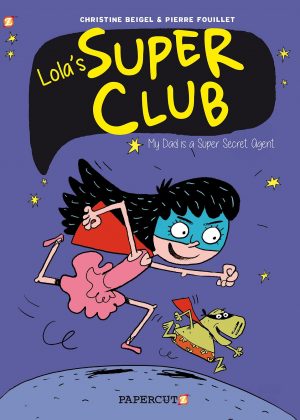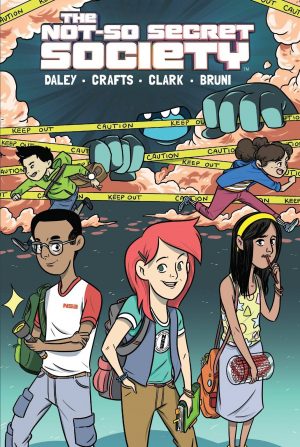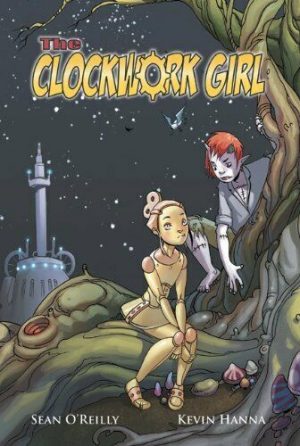Review by Woodrow Phoenix
The Cardboard Kingdom is a fascinating storytelling experiment that succeeds brilliantly, chronicling a summer vacation in the lives of sixteen children who all live on the same couple of blocks in a suburban North American neighbourhood. The first ten pages of this 280-page book are silent, introducing us to the Sorceress, who has the dramatic headgear, flowing hair and robes of a Disney villainess. We see her first in a child’s drawing and then in a full-page pose before she conjures powerful magical spells to menace her victim with her pet dragon. Suddenly the viewpoint switches and we realise this is the internal projection of a child playing in his garden. All the props are made of cardboard, and the enchanted well is just a paddling pool.
By the end of the first chapter we’ve seen three children create personas for themselves, fight a magical battle and become friends. Short chapters introduce us to all the other children in the area as they see what is happening on their block, build their own costumes out of cardboard and join in the adventures. The drawing switches back and forth between the world of their creations and the real world, showing beautifully how imagination makes these very different children bond, allowing them to exist in a boundary-free space where they can be whoever they can imagine and write their own stories together.
This book is itself a collaboration between writer/artist Chad Sell and ten other authors: Jay Fuller, David DeMeo, Katie Schenkel, Kris Moore, Molly Muldoon, Vid Alliger, Manuel Betancourt, Michael Cole, Cloud Jacobs, and Barbara Perez Marquez. They each write the stories of a different character, often using elements from their own childhoods. The mix of viewpoints as the children criss-cross lets readers experience the story from alternate angles, revealing inner thoughts, feelings and home lives as well. It’s a very effective way to tackle some big emotional themes as the group deals with personal and family changes; being torn between divorcing parents; trying to figure out gender identities; living in a ‘blended’ stepfamily where new siblings have to get to know one another; learning how to interact with others who have different ideas to you, and many other adolescent growth issues. The action tends to divide into silent sequences for the imaginary world and lots of loud, argumentative dialogue for the real world. It contrasts the kids in their colourful cardboard land of hideouts, lairs, taverns and battlegrounds and the challenging external world of teenage bullies, demanding parents, and complicated new emotions.
Chad Sell tackles some difficult issues in a gracefully smooth way, using his excellent design sense to tell a lot of his story symbolically with drawings that combine all the styles of fantasy fiction from superheroes and fairytales to magical quests and space operas. The vivid blend of metaphorical information might occasionally be too subtle for younger readers, but with re-reading they will pick up the visual clues and make the connections to some of the less obvious character development. You can follow their evolution further in Roar of the Beast.
